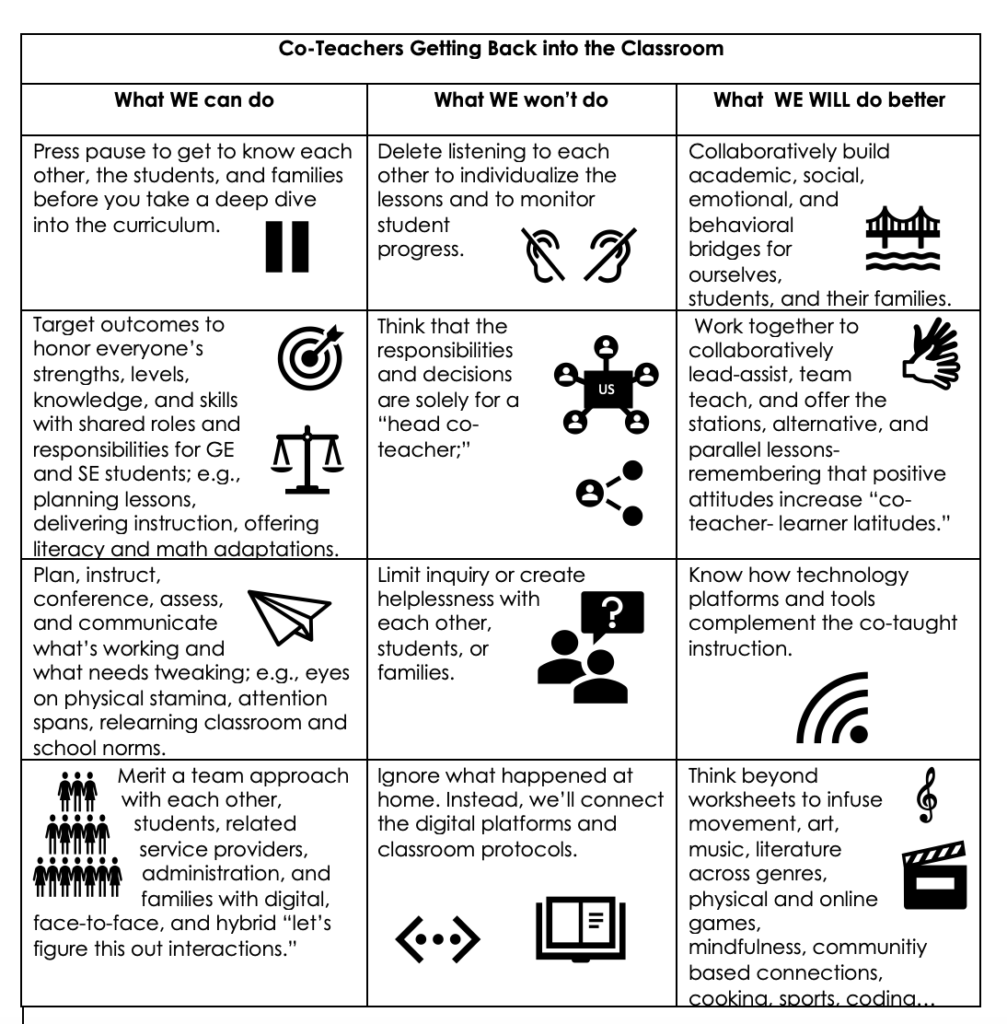Co-Teaching: Transitions from Online Learning Back into Classrooms
Stability and security are essential despite where and how students are learning. Whether the teaching and learning occurs in person or at home, co-teachers collaboratively ensure productivity. Some co-teachers are walking into a teacher’s room together or now grabbing a cup of coffee from their own kitchens, or the local coffee shop. Both students and co-teachers are also transitioning back and forth from kitchens to classrooms. The “school norms” include “home norms” for a combination of co-taught environments. Sometimes co-teachers are in a room with students seated at their desks as they socially distance next to their peers, while some co-teachers and students are trying to quiet their dogs while learning or co-teaching with devices in break out rooms during online parallel lessons. An IEP that states a student needs increased proximity is being redefined in remote learning! Students are often sharing a computer with a sibling as they are “in class” at home alongside a parent for part of the week and in school learning for other days. Some co-teachers are also juggling how to support their own children who are learning remotely from home. Some parents or caregivers and spouses are also commuting to a job during the school hours.
The variables include being in a school building for part of the day or week in limited numbers, wearing masks, and following arrows on the floor that indicate which direction to walk. Some students in the same class are opening up their lockers and some students are opening up links. Different plans and settings are juggled by students and their families, school administrators, special and general education teachers and their families, and legislators who are trying to prepare for next, when some of the next pages are not yet written. Co-teachers still plan together to ensure students achieve the K-12 standards, but they also co-offer empathy and compassion for students and families who respectively have more or less on their plates-literally and figuratively than missing the due date for an online or in person assignment. Administrators are also collaborative players who need to provide guidelines and set protocols. This is often easier to do on paper, than in real or virtual times in co-taught platforms. The next chart offers an overview of how co-teachers and school staff can transition back to classrooms as partners with each other and as advocates for their students. Today, no matter what your age, if you are a “creature of habit” who feels more comfortable doing the same thing, you require adaptability skills. Students with special needs can succeed during tough times, but not without the preparation, encouragement, models, and expectations outlined. Co-teachers need to partner with each other, administrators, related staff, and their shared students and families. Today, we all have special needs, but individually and collaboratively we also have many strengths!

